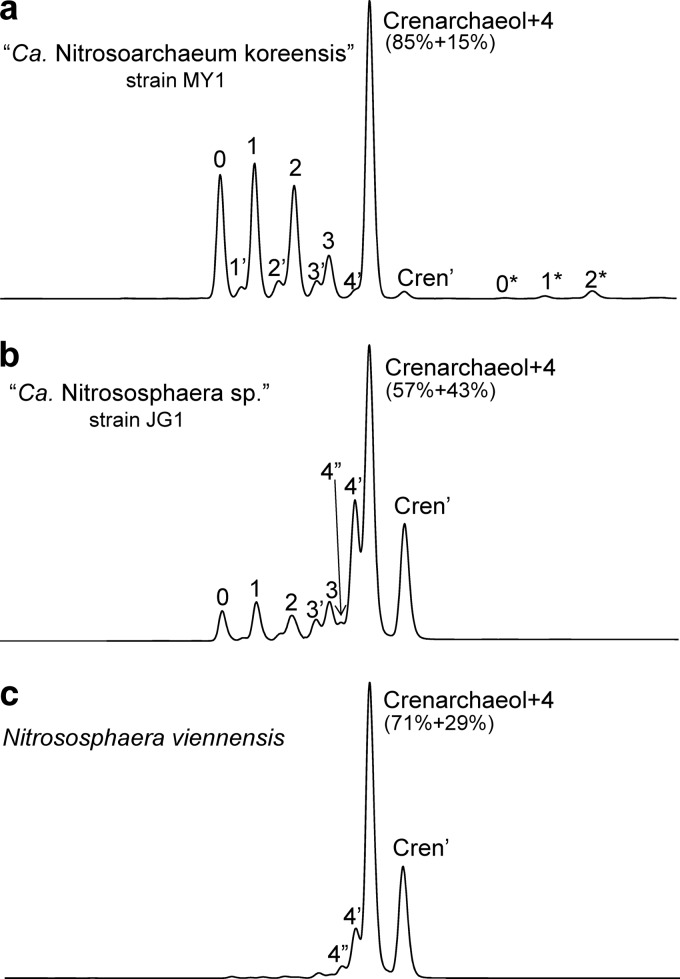Fig 2.
Base peak chromatogram of core GDGT profiles of “Ca. Nitrosoarchaeum koreensis” MY1 (a), “Ca. Nitrososphaera” strain JG1 (adapted from reference 12) (b), and Nitrososphaera viennensis EN76 (c). Numbered peaks correspond to GDGT structures shown in Fig. 1. Numbers marked with a prime represent regioisomers with the same [M+H]+ as the corresponding GDGT. 4″ represents an unknown isomer of GDGT-4. The percentages listed below the peak “crenarchaeol + 4” indicate the respective contributions of each GDGT to the area of that peak, as corrected according to reference 10. Numbered peaks labeled with an asterisk are tentatively identified as by-products generated by acid hydrolysis of hydroxyl GDGTs with the number indicating the number of rings. They are characterized by [M+H]+ ions at 1,300, 1,298, and 1,296 Da for 0*, 1*, and 2*, respectively. These components have been detected previously (20, 29). Since they are not affected by hydrogenation (PtO2; ethyl acetate/acetic acid), they are probably H-shaped GDGTs formed as artifacts during removal of the polar head group and hydroxyl group by acid hydrolysis.

